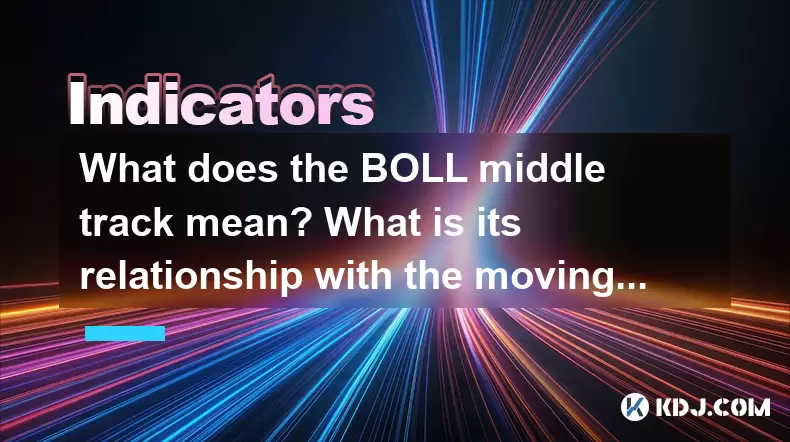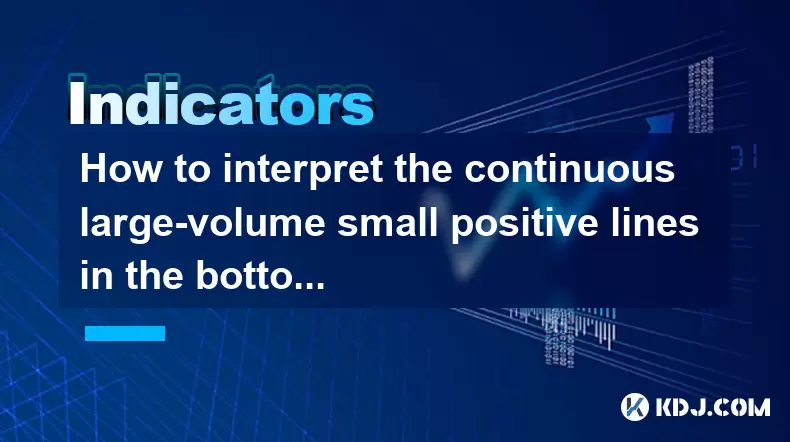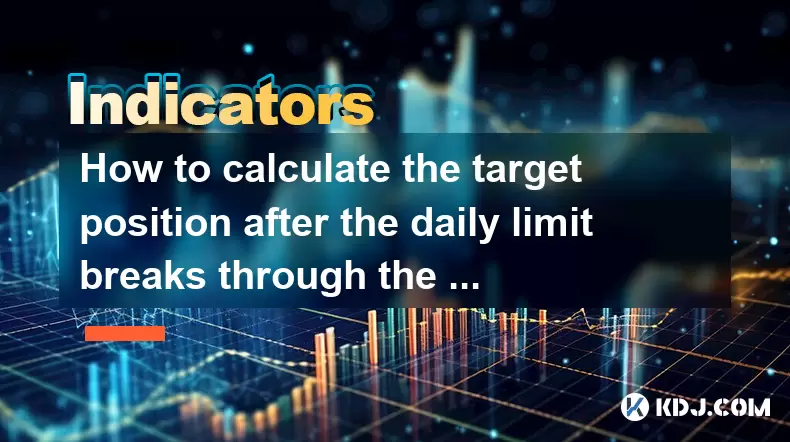-
 Bitcoin
Bitcoin $101,898.5005
-0.75% -
 Ethereum
Ethereum $2,258.1125
-1.07% -
 Tether USDt
Tether USDt $1.0004
0.01% -
 XRP
XRP $2.0178
-2.93% -
 BNB
BNB $624.0243
-1.53% -
 Solana
Solana $134.3298
-0.90% -
 USDC
USDC $0.9999
0.01% -
 TRON
TRON $0.2675
-2.05% -
 Dogecoin
Dogecoin $0.1538
-1.96% -
 Cardano
Cardano $0.5482
-1.11% -
 Hyperliquid
Hyperliquid $35.5636
5.45% -
 Bitcoin Cash
Bitcoin Cash $453.4902
-1.66% -
 Sui
Sui $2.5134
-2.97% -
 UNUS SED LEO
UNUS SED LEO $9.1292
1.77% -
 Chainlink
Chainlink $11.8457
-1.60% -
 Stellar
Stellar $0.2312
-2.73% -
 Avalanche
Avalanche $16.9721
0.29% -
 Toncoin
Toncoin $2.7549
-3.82% -
 Shiba Inu
Shiba Inu $0.0...01081
-1.10% -
 Litecoin
Litecoin $80.8250
-0.71% -
 Hedera
Hedera $0.1374
0.21% -
 Monero
Monero $305.4827
-2.36% -
 Ethena USDe
Ethena USDe $1.0006
0.00% -
 Dai
Dai $1.0000
-0.01% -
 Polkadot
Polkadot $3.2085
-3.12% -
 Bitget Token
Bitget Token $4.0845
-3.13% -
 Uniswap
Uniswap $6.3353
-1.63% -
 Pi
Pi $0.5085
-0.70% -
 Pepe
Pepe $0.0...08913
-3.82% -
 Aave
Aave $232.7090
-0.58%
What does the BOLL middle track mean? What is its relationship with the moving average?
The BOLL middle track, a 20-period SMA, is crucial for assessing crypto volatility and trends, acting as a dynamic baseline within Bollinger Bands for trading strategies.
May 24, 2025 at 07:49 am

The BOLL middle track, also known as the Bollinger Band middle line, is a critical component of the Bollinger Bands indicator, which is widely used in the cryptocurrency trading community for technical analysis. This middle track serves as a baseline for assessing the volatility and potential price movements of a cryptocurrency. In this article, we will delve into what the BOLL middle track represents, its calculation, and its relationship with the moving average.
Understanding the BOLL Middle Track
The BOLL middle track is essentially a simple moving average (SMA) that forms the central line of the Bollinger Bands. Typically, the middle track is calculated using a 20-period simple moving average of the closing prices of a cryptocurrency. This means that if you are analyzing daily price data, the middle track at any given point is the average of the closing prices over the past 20 days.
The purpose of the BOLL middle track is to provide a dynamic baseline that reflects the average price of the cryptocurrency over a specified period. It acts as a reference point from which the upper and lower Bollinger Bands are derived, helping traders identify potential overbought or oversold conditions in the market.
Calculation of the BOLL Middle Track
To calculate the BOLL middle track, follow these steps:
- Select the period: Decide on the number of periods to use for the moving average. The standard setting is 20 periods, but this can be adjusted based on your trading strategy.
- Gather the closing prices: Collect the closing prices for the chosen number of periods.
- Calculate the average: Sum the closing prices and divide by the number of periods to get the simple moving average.
For example, if you are analyzing the daily closing prices of Bitcoin over the past 20 days, you would sum the closing prices of these 20 days and then divide by 20 to get the value of the BOLL middle track for the current day.
Relationship with the Moving Average
The BOLL middle track is inherently a type of moving average, specifically a simple moving average. The relationship between the BOLL middle track and other types of moving averages, such as the exponential moving average (EMA), lies in their method of calculation and sensitivity to price changes.
- Simple Moving Average (SMA): The BOLL middle track is a SMA, meaning it gives equal weight to all data points within the chosen period. This makes it less sensitive to recent price changes compared to other moving averages.
- Exponential Moving Average (EMA): An EMA places more weight on recent prices, making it more responsive to new information. While the BOLL middle track remains a SMA, traders often compare it with an EMA to gain additional insights into market trends.
Using the BOLL Middle Track in Trading
Traders use the BOLL middle track in various ways to enhance their trading strategies. Here are some common applications:
- Trend Identification: The BOLL middle track can help identify the overall trend of a cryptocurrency. If the price remains above the middle track, it suggests an uptrend, while a price below the middle track indicates a downtrend.
- Support and Resistance: The middle track can act as a dynamic level of support or resistance. Traders may look for price bounces off the middle track to enter or exit trades.
- Breakouts: A breakout above or below the BOLL middle track can signal a potential change in trend, prompting traders to adjust their positions accordingly.
Combining the BOLL Middle Track with Other Indicators
To enhance the effectiveness of the BOLL middle track, traders often combine it with other technical indicators. Some popular combinations include:
- Relative Strength Index (RSI): The RSI can help confirm overbought or oversold conditions identified by the Bollinger Bands. For instance, if the price touches the upper Bollinger Band and the RSI is above 70, it may signal a strong overbought condition.
- Moving Average Convergence Divergence (MACD): The MACD can provide additional signals for trend changes. A bullish crossover in the MACD, combined with the price moving above the BOLL middle track, can reinforce a buy signal.
- Volume: Analyzing trading volume alongside the BOLL middle track can help validate breakouts. High volume during a breakout above the middle track can confirm the strength of the move.
Practical Example of Using the BOLL Middle Track
Let's consider a practical example of how a trader might use the BOLL middle track to make trading decisions. Suppose you are analyzing the price of Ethereum (ETH) using daily data and the standard 20-period setting for the Bollinger Bands.
- Step 1: Calculate the BOLL middle track using the closing prices of the past 20 days.
- Step 2: Plot the Bollinger Bands on your chart, with the BOLL middle track as the central line.
- Step 3: Observe the price action relative to the BOLL middle track. If the price of ETH is consistently above the middle track, it indicates an uptrend.
- Step 4: Look for potential entry points. If the price pulls back to the BOLL middle track but remains above it, this could be a buying opportunity, as it suggests the uptrend is still intact.
- Step 5: Use additional indicators like the RSI or MACD to confirm your trading signals. For instance, if the RSI is not overbought and the MACD shows a bullish crossover, it can reinforce your decision to buy.
Frequently Asked Questions
Q1: Can the BOLL middle track be used for short-term trading?
Yes, the BOLL middle track can be used for short-term trading by adjusting the period of the moving average. For instance, using a shorter period like 10 days can make the middle track more responsive to recent price changes, which is suitable for short-term trading strategies.
Q2: How does the BOLL middle track differ from the upper and lower Bollinger Bands?
The BOLL middle track is the central line of the Bollinger Bands and represents the simple moving average. The upper and lower Bollinger Bands are calculated by adding and subtracting a multiple of the standard deviation of the closing prices from the middle track. The upper and lower bands provide insights into volatility and potential overbought or oversold conditions, while the middle track focuses on the average price.
Q3: Is the BOLL middle track effective for all cryptocurrencies?
The effectiveness of the BOLL middle track can vary depending on the volatility and trading volume of the cryptocurrency. For highly volatile cryptocurrencies, the middle track can be more useful in identifying trends and potential reversals. However, for less volatile or thinly traded cryptocurrencies, the middle track might provide less reliable signals.
Q4: Can the BOLL middle track be used in conjunction with other types of moving averages?
Yes, traders often use the BOLL middle track alongside other types of moving averages, such as the EMA, to gain a more comprehensive view of market trends. Combining different moving averages can help confirm signals and improve the accuracy of trading decisions.
Disclaimer:info@kdj.com
The information provided is not trading advice. kdj.com does not assume any responsibility for any investments made based on the information provided in this article. Cryptocurrencies are highly volatile and it is highly recommended that you invest with caution after thorough research!
If you believe that the content used on this website infringes your copyright, please contact us immediately (info@kdj.com) and we will delete it promptly.
- XRP Rally Meets Neo Pepe Presale: A Meme Coin Revolution?
- 2025-06-23 17:05:13
- Coin-Op Comeback: Arcade Bars, Stern, and a Director's New Venture
- 2025-06-23 16:45:12
- XRP in Japan: From Community Day Tacos to Payment Sector Transformation
- 2025-06-23 17:05:13
- LILPEPE Presale Frenzy: The Meme Coin Revolution is Here, Ya'll!
- 2025-06-23 16:45:12
- Bitcoin Crash Incoming? Kiyosaki Bets Big on Silver Amidst Global Uncertainty
- 2025-06-23 17:25:11
- Dogecoin, Meme Coins, Price Prediction: Riding the Bullish Wave?
- 2025-06-23 17:25:11
Related knowledge

Is the high opening and low closing and huge volume the next day a trap for more?
Jun 23,2025 at 05:07pm
Understanding High Opening and Low Closing with Huge VolumeWhen traders observe a high opening followed by a low closing and massive volume the next day, it often raises concerns about whether this is a trap set by larger players in the market. This pattern typically indicates strong volatility within a short period, which can confuse retail investors. ...

How to interpret the MACD's second golden cross on the water but insufficient volume?
Jun 23,2025 at 05:01pm
Understanding the MACD Indicator and Its SignificanceThe Moving Average Convergence Divergence (MACD) is a widely used technical analysis tool in cryptocurrency trading. It helps traders identify potential buy or sell signals by showing the relationship between two moving averages of an asset’s price. The MACD line, signal line, and histogram are the th...

How much volume is required for the W-bottom to break through the neckline of the time-sharing chart?
Jun 23,2025 at 04:21pm
Understanding the W-Bottom Pattern in Cryptocurrency TradingThe W-bottom pattern is a popular technical analysis formation used by traders to identify potential bullish reversals. It typically appears at the end of a downtrend and resembles the letter 'W' on price charts. In the context of cryptocurrency trading, where volatility is high and trends shif...

How to interpret the continuous large-volume small positive lines in the bottom area?
Jun 23,2025 at 04:43pm
Understanding the Basics of 'Large-Volume Small Positive Lines'In technical analysis, especially within the cryptocurrency market, the pattern known as 'large-volume small positive lines' refers to a scenario where the price increases slightly (small positive candlestick) but is accompanied by unusually high trading volume. This phenomenon typically occ...

How to read the sideways consolidation after the bottom volume and long positive line?
Jun 23,2025 at 02:28pm
Understanding the Sideways ConsolidationWhen analyzing cryptocurrency charts, sidewards consolidation refers to a phase where prices move within a narrow range without a clear upward or downward trend. This pattern often appears after significant price movements, such as a sharp increase followed by a period of equilibrium between buyers and sellers. In...

How to calculate the target position after the daily limit breaks through the previous high?
Jun 23,2025 at 02:57pm
Understanding the Daily Limit BreakthroughIn cryptocurrency trading, a daily limit typically refers to the maximum price movement allowed within a single trading day on certain exchanges. When this limit is breached, especially when it surpasses the previous high, traders often seek to calculate the target position or expected price movement following s...

Is the high opening and low closing and huge volume the next day a trap for more?
Jun 23,2025 at 05:07pm
Understanding High Opening and Low Closing with Huge VolumeWhen traders observe a high opening followed by a low closing and massive volume the next day, it often raises concerns about whether this is a trap set by larger players in the market. This pattern typically indicates strong volatility within a short period, which can confuse retail investors. ...

How to interpret the MACD's second golden cross on the water but insufficient volume?
Jun 23,2025 at 05:01pm
Understanding the MACD Indicator and Its SignificanceThe Moving Average Convergence Divergence (MACD) is a widely used technical analysis tool in cryptocurrency trading. It helps traders identify potential buy or sell signals by showing the relationship between two moving averages of an asset’s price. The MACD line, signal line, and histogram are the th...

How much volume is required for the W-bottom to break through the neckline of the time-sharing chart?
Jun 23,2025 at 04:21pm
Understanding the W-Bottom Pattern in Cryptocurrency TradingThe W-bottom pattern is a popular technical analysis formation used by traders to identify potential bullish reversals. It typically appears at the end of a downtrend and resembles the letter 'W' on price charts. In the context of cryptocurrency trading, where volatility is high and trends shif...

How to interpret the continuous large-volume small positive lines in the bottom area?
Jun 23,2025 at 04:43pm
Understanding the Basics of 'Large-Volume Small Positive Lines'In technical analysis, especially within the cryptocurrency market, the pattern known as 'large-volume small positive lines' refers to a scenario where the price increases slightly (small positive candlestick) but is accompanied by unusually high trading volume. This phenomenon typically occ...

How to read the sideways consolidation after the bottom volume and long positive line?
Jun 23,2025 at 02:28pm
Understanding the Sideways ConsolidationWhen analyzing cryptocurrency charts, sidewards consolidation refers to a phase where prices move within a narrow range without a clear upward or downward trend. This pattern often appears after significant price movements, such as a sharp increase followed by a period of equilibrium between buyers and sellers. In...

How to calculate the target position after the daily limit breaks through the previous high?
Jun 23,2025 at 02:57pm
Understanding the Daily Limit BreakthroughIn cryptocurrency trading, a daily limit typically refers to the maximum price movement allowed within a single trading day on certain exchanges. When this limit is breached, especially when it surpasses the previous high, traders often seek to calculate the target position or expected price movement following s...
See all articles
























































































